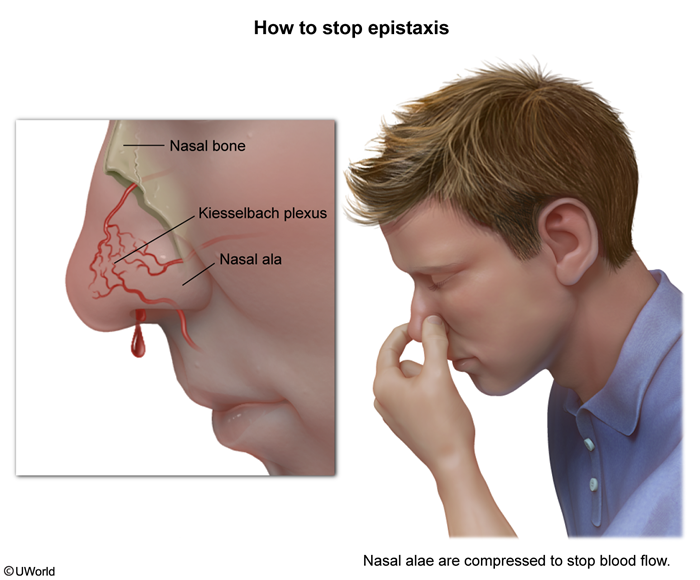Epistaxis
Article Sections
Introduction
The nasal mucosa is highly vascular and easily irritated by trauma (eg, nose-picking), mucosal dryness, foreign body insertion, and rhinitis (eg, allergy, infection). Blood vessel rupture leads to bleeding from the nose (epistaxis), which can range from a minor inconvenience to a serious medical concern.
Anatomy
Epistaxis can be classified by the source of the bleeding as either anterior or posterior.
Anterior epistaxisAnterior nosebleeds are by far the most common, and the vast majority occur within the vascular watershed area of the nasal septum (anteroinferior part of the nasal septal mucosa) known as the Kiesselbach plexus. Anastomosis of the following vessels occurs in this region:
- Sphenopalatine artery (branch of the maxillary artery)
- Anterior ethmoidal artery (branch of the ophthalmic artery)
- Superior labial artery (branch of the facial artery)
Continue Learning with UWorld
Get the full Epistaxis article plus rich visuals, real-world cases, and in-depth insights from medical experts, all available through the UWorld Medical Library.
Figures
